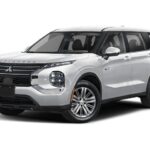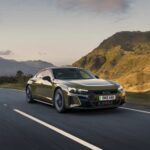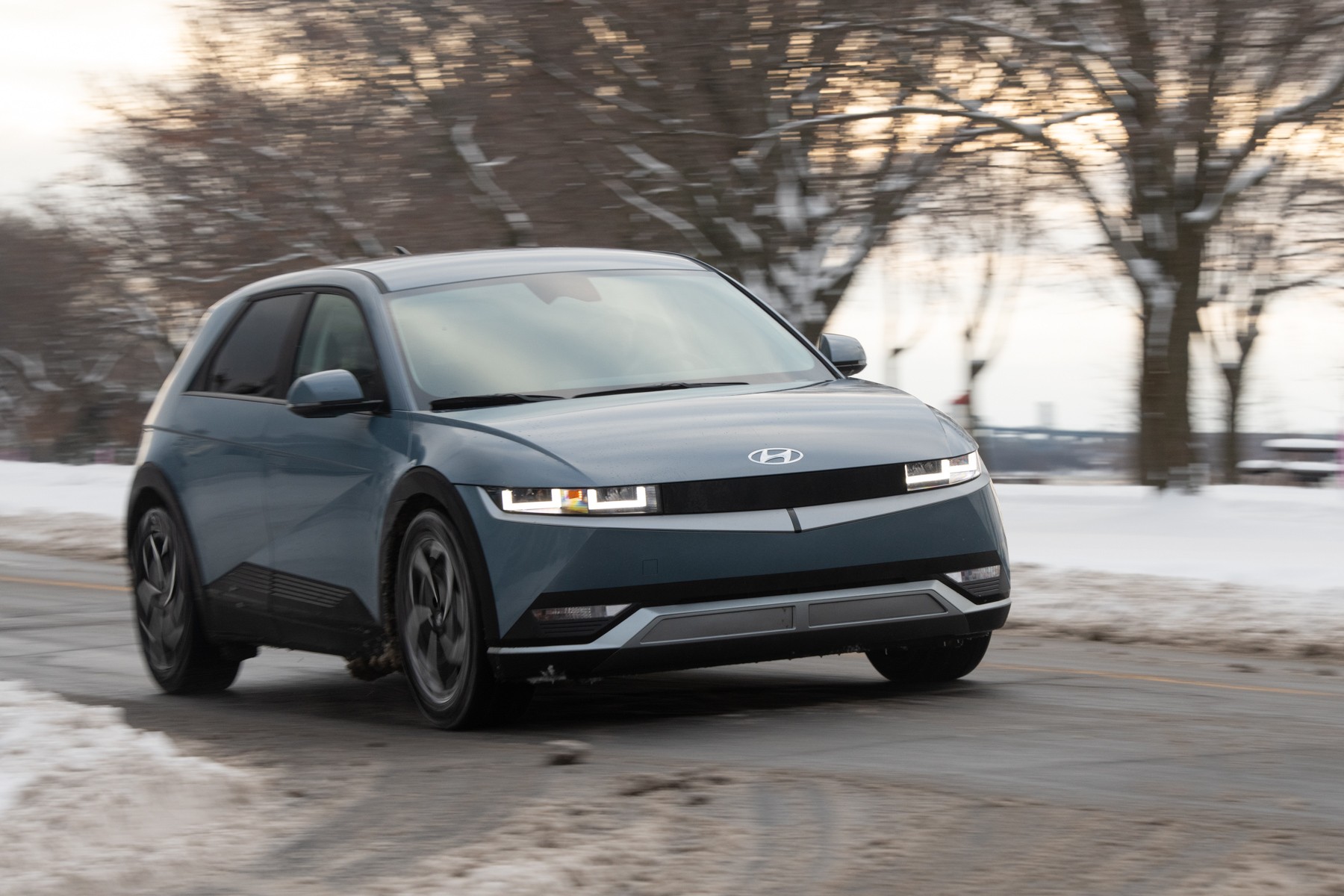 Hyundai IONIQ 5 Top Shot
Hyundai IONIQ 5 Top Shot
The 2024 Hyundai IONIQ 5 is an electric vehicle that manages to recapture a sense of automotive wonder, reminding enthusiasts of the excitement that comes with truly innovative cars. Much like its sleek sedan sibling, the IONIQ 6, the IONIQ 5 stands out with its distinctive design. However, as a hatchback, the IONIQ 5 elevates its appeal, presenting a futuristic, pixelated aesthetic reminiscent of a Lancia Delta Integrale reimagined for the electric age. While both IONIQ models boast striking designs that break away from the conventional EV mold, the IONIQ 5’s added practicality makes it particularly compelling as a family-friendly electric vehicle option, despite a notable, albeit character-defining, imperfection.
The Defining Flaw: A Missing Rear Wiper
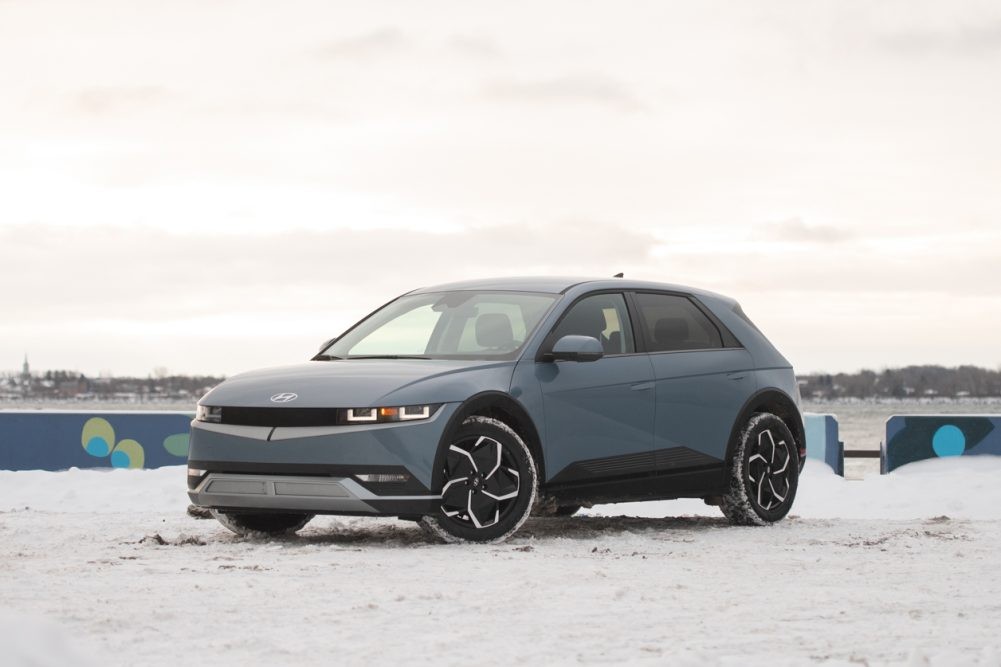 Hyundai IONIQ 5 Front Three Quarter View
Hyundai IONIQ 5 Front Three Quarter View
This imperfection, almost ironically, becomes a key part of the IONIQ 5’s personality: the absence of a rear windshield wiper. For drivers in regions with challenging weather conditions, particularly during winter with salt and road grime, this omission becomes immediately apparent. On salt-covered winter roads, the rear window quickly becomes obscured, severely limiting rear visibility. In such conditions, operating the IONIQ 5 can feel akin to driving a windowless van, posing a considerable inconvenience and safety concern. Yet, this quirky flaw is slated to be addressed with the anticipated mid-cycle refresh of the IONIQ 5, and is expected to be included in the performance-oriented IONIQ 5 N model, making it a temporary issue for now.
Side profile of the 2024 Hyundai IONIQ 5 demonstrating its hatchback form factor and strong character lines.
However, much like Cindy Crawford’s mole or Jennifer Lopez’s curves, this flaw somehow adds to the IONIQ 5’s unique charm. It’s a conversation starter, an unexpected quirk in an otherwise meticulously designed vehicle. The IONIQ 5 exudes coolness from every angle, from its overall shape to the cyberpunk-inspired headlights and taillights. Its design plays tricks with perception; it appears compact from a distance yet reveals a surprisingly large footprint upon closer inspection. This visual illusion is reminiscent of the design ingenuity Frank Stephenson employed with the original BMW MINI Cooper, maximizing interior space within a seemingly small package.
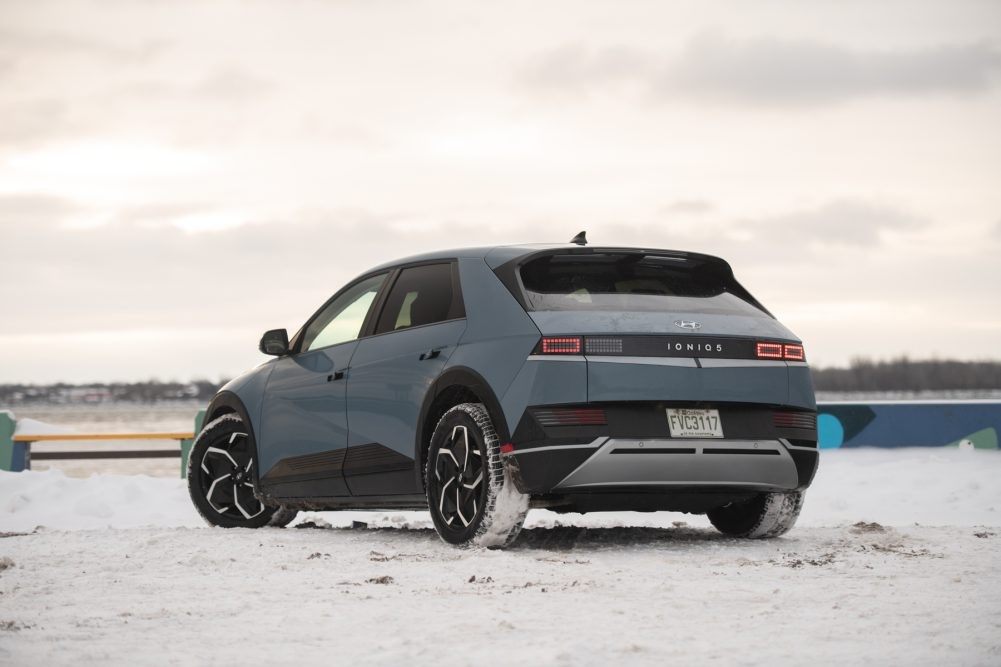 Hyundai IONIQ 5 Rear Three Quarter View
Hyundai IONIQ 5 Rear Three Quarter View
The model reviewed here is the Preferred Long Range rear-wheel drive variant, the entry point to the IONIQ 5 lineup, priced at $57,666 (before EV incentives in Canada). This price point is noteworthy, especially considering that the Tesla Model 3, a key competitor, is now available at a lower price. For the 2024 model year in Canada, Hyundai streamlines the IONIQ 5 options to two main trims, with the upgrade primarily adding all-wheel drive capability. An additional $6,000 Ultimate package further enhances the vehicle with more premium features and advanced technology. Despite the allure of upgrades, the base Preferred Long Range trim, especially in the Lucid Blue paint, presents a compelling value proposition, offering ample features for most drivers. However, accessing the vibrant Teal paint option unfortunately requires opting for the top-tier Ultimate package.
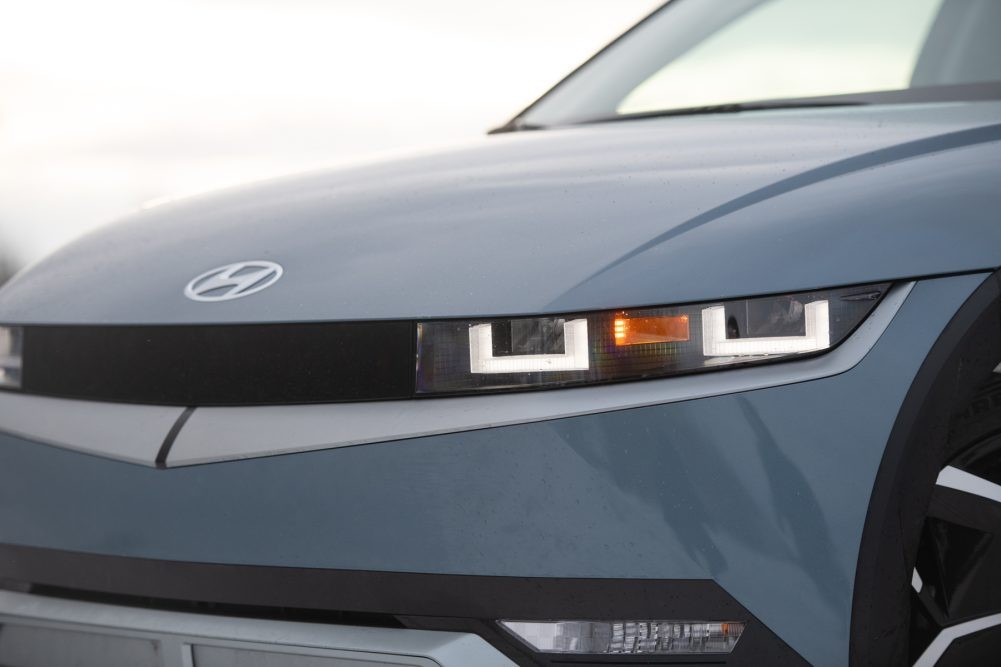 Hyundai IONIQ 5 Headlights Detail
Hyundai IONIQ 5 Headlights Detail
Under the hood, all 2024 Hyundai IONIQ 5 models in Canada now feature the same 77.4-kWh liquid-cooled lithium-ion battery pack. Hyundai Canada has discontinued the smaller 58-kWh battery option available in other markets. In the rear-wheel drive configuration tested, this battery powers a single rear-mounted electric motor producing 225 horsepower and 258 lb-ft of torque. This setup provides a Natural Resources Canada (NRCan) estimated range of 488 km. Charging capabilities include a 10.9 kW Level 2 home charging rate and a fast-charging capacity of up to 239 kW under optimal conditions.
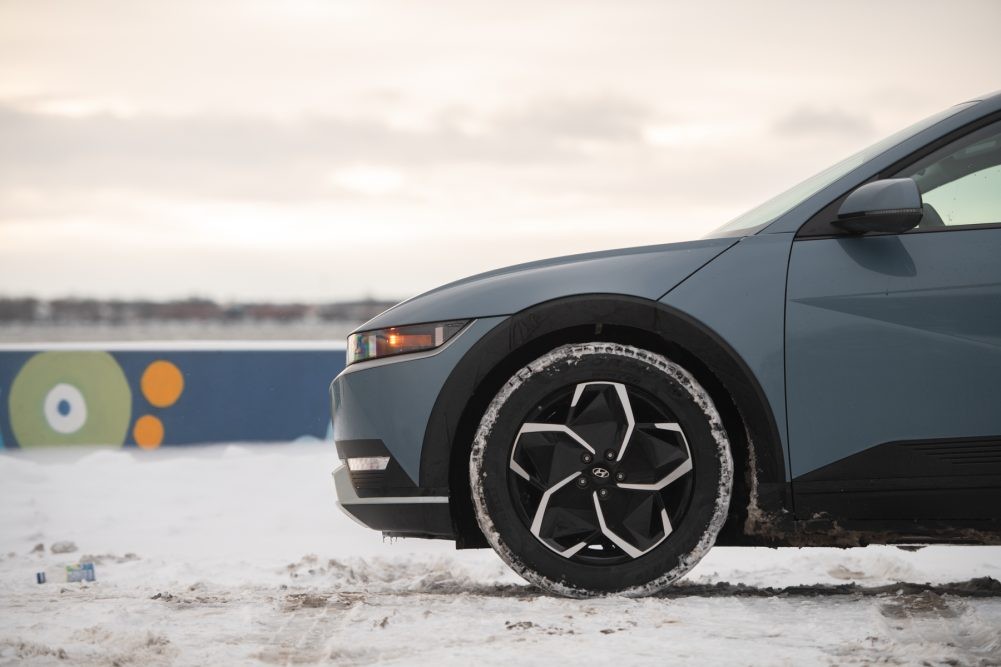 Hyundai IONIQ 5 Wheel Design
Hyundai IONIQ 5 Wheel Design
Performance and Winter Driving Dynamics
Hyundai IONIQ 5 being driven on a snowy road, demonstrating its winter driving capability.
During winter testing, achieving the advertised 488 km range proved unrealistic. Preheating the cabin using the My Hyundai app while plugged into a home charger resulted in a maximum indicated range of 300 km. While a significant reduction, this range still accommodated typical daily driving needs and even holiday road trips. Hyundai’s Winter Mode, a battery preconditioning system, effectively prepared the battery for fast charging, consistently achieving impressive charging rates at 100 kW and 150 kW charging stations, averaging 85 kW and 130 kW respectively during charging sessions.
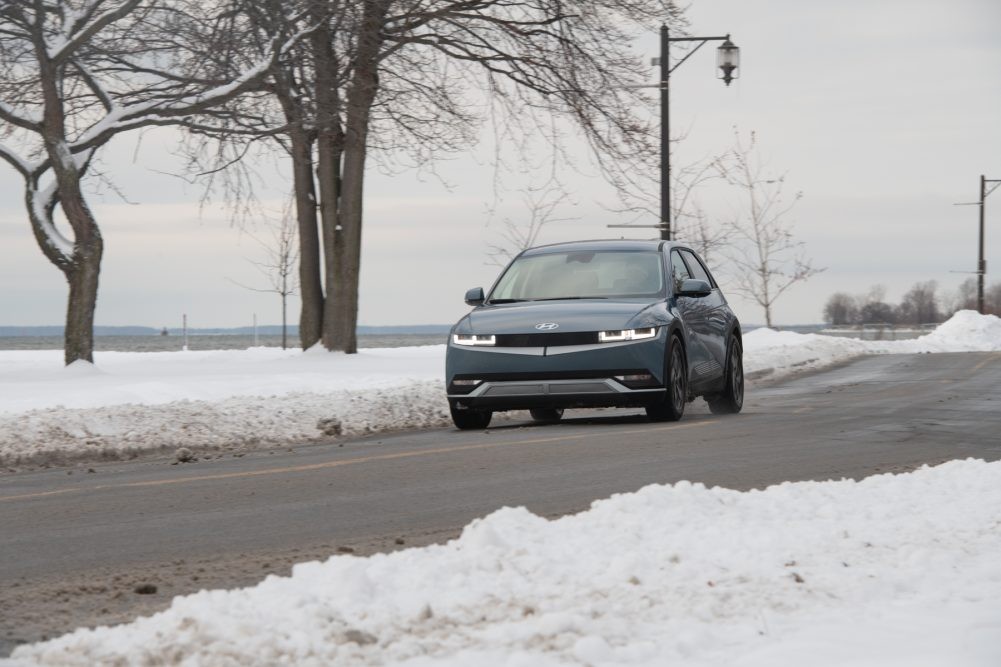 Hyundai IONIQ 5 Driving Front View on Road
Hyundai IONIQ 5 Driving Front View on Road
Beyond charging speeds, the IONIQ 5 excels in driving dynamics. Even in the base rear-wheel drive configuration, the power and torque are more than adequate for daily driving, providing enough punch to surprise even a Volkswagen Golf GTI driver. The rear-wheel drive setup adds an element of fun, especially in snowy or icy conditions, allowing for controlled drifts when traction control is disabled. However, the instant torque from the electric motor necessitates caution to avoid unintended spins. The IONIQ 5’s traction control system offers three settings: on, partially off, and fully off, allowing drivers to tailor the system to road conditions, with the partially off setting being ideal for snowy or icy surfaces.
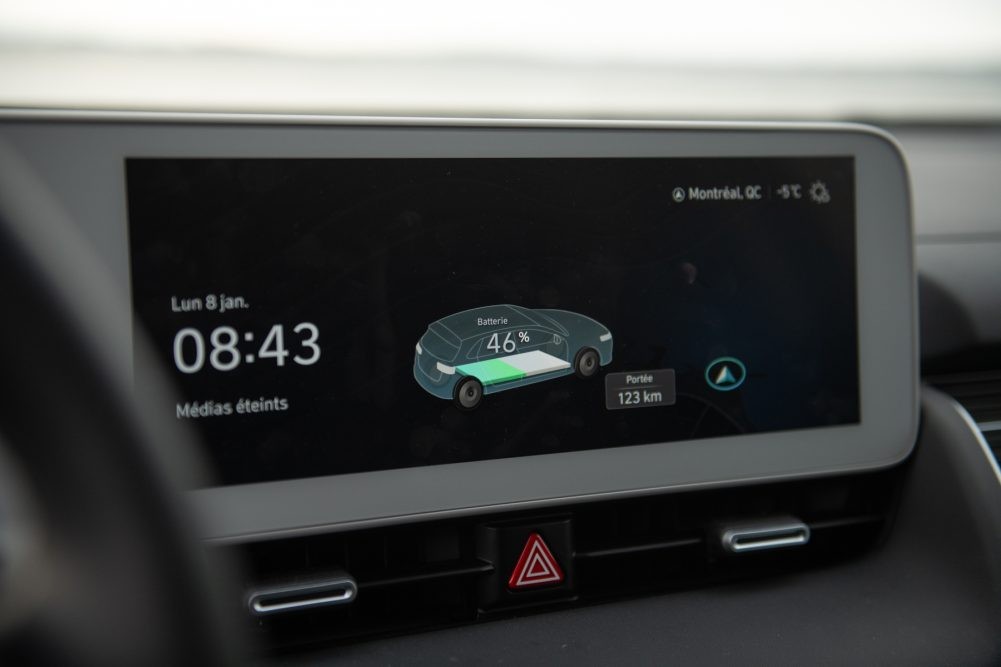 Hyundai IONIQ 5 Infotainment System Display
Hyundai IONIQ 5 Infotainment System Display
The IONIQ 5 delivers a solid, refined, and almost German-like driving experience, especially in terms of road composure. While not a dedicated hot hatchback, it handles corners surprisingly well for its weight. Hyundai’s regenerative braking system is particularly intuitive, offering four levels controlled via steering wheel paddles: three levels of regen and the i-Pedal mode for one-pedal driving. An Auto mode intelligently manages regenerative braking for effortless driving.
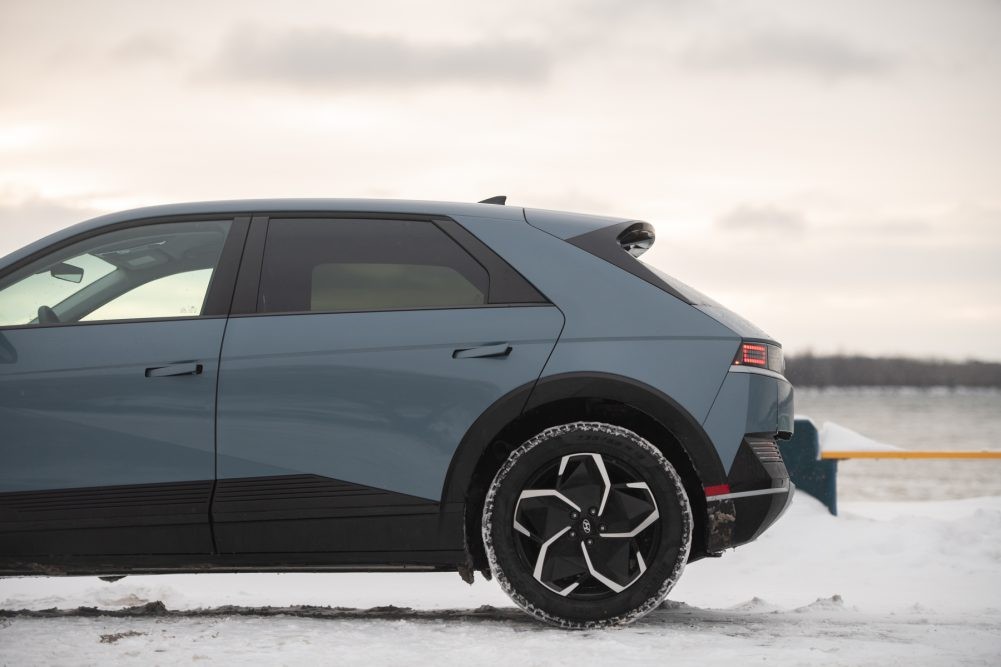 Hyundai IONIQ 5 Rear Section Design
Hyundai IONIQ 5 Rear Section Design
Practicality is a key differentiator for choosing the IONIQ 5 over the IONIQ 6 sedan. Hyundai markets it as a crossover, but it functions more like a large hatchback, offering generous passenger legroom and headroom, along with a sizable trunk capable of accommodating strollers and groceries.
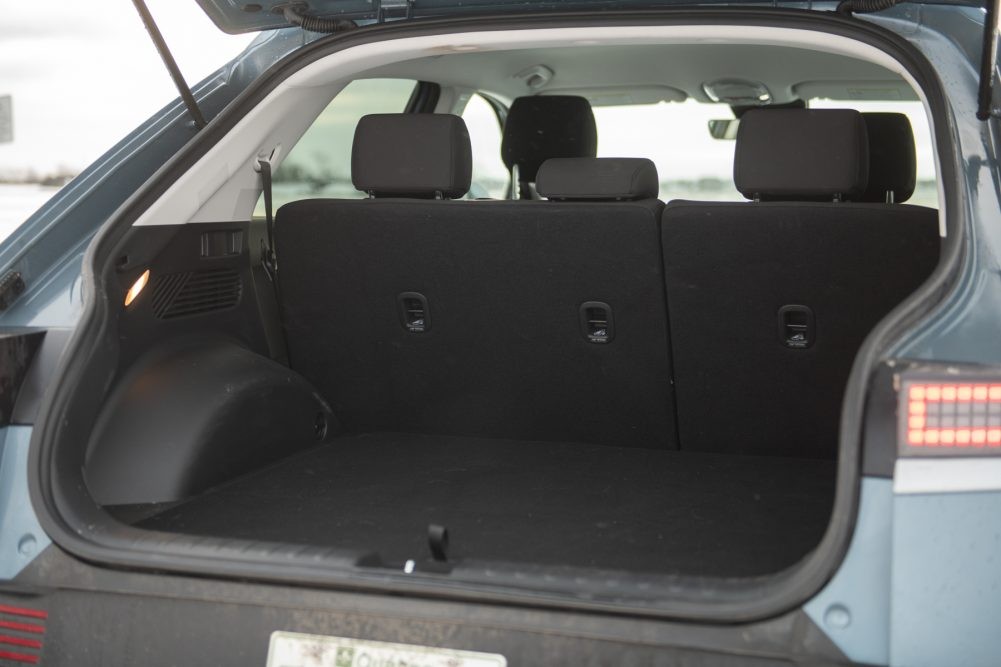 Hyundai IONIQ 5 Cargo Space View
Hyundai IONIQ 5 Cargo Space View
During holiday travels, the IONIQ 5’s trunk easily swallowed gifts, toys, extra clothing, and pet gear. The spacious interior comfortably accommodated passengers and cargo, reinforcing its suitability as a family vehicle. The abundance of storage space throughout the cabin further enhances its practicality.
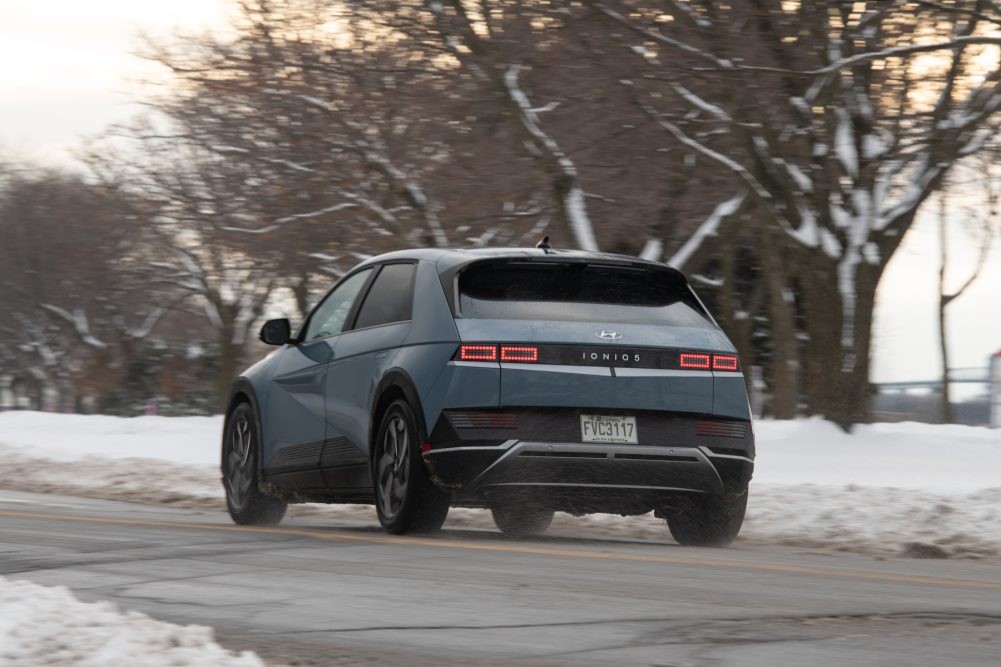 Hyundai IONIQ 5 Driving Rear View on Highway
Hyundai IONIQ 5 Driving Rear View on Highway
In conclusion, the 2024 Hyundai IONIQ 5 is a remarkably well-rounded electric vehicle with a distinctive character, highlighted by its intentional (or perhaps unintentional) omission of a rear wiper. Its blend of retro-futuristic styling, practical hatchback utility, enjoyable driving dynamics, and competitive EV performance makes it a standout choice in the electric vehicle market. While Hyundai hasn’t confirmed the rear wiper situation as deliberate, the overall sophistication and engineering of the IONIQ 5 suggest a level of intentional design, even in its imperfections.
Clavey’s Verdict
Review of the 2024 Hyundai IONIQ 5 Preferred RWD
Pros:
- Retro 80’s inspired styling that remains fresh and appealing.
- Excellent value, even in the base configuration, offering a comprehensive feature set.
- Spacious, practical interior combined with a fun-to-drive character.
Cons:
- The absence of a rear wiper is a significant drawback in inclement weather.
- Premium paint colors are locked behind expensive trim packages.
- Increasing competition, particularly from more affordable options like the Tesla Model 3.
9.5 / 10
Clavey’s Corner is based in Montreal, Quebec, Canada. Prices and specifications mentioned are specific to the Canadian market.
Special thanks to Hyundai Canada for providing the test vehicle.
Photography by Guillaume Fournier.
Contact the author: [email protected]
